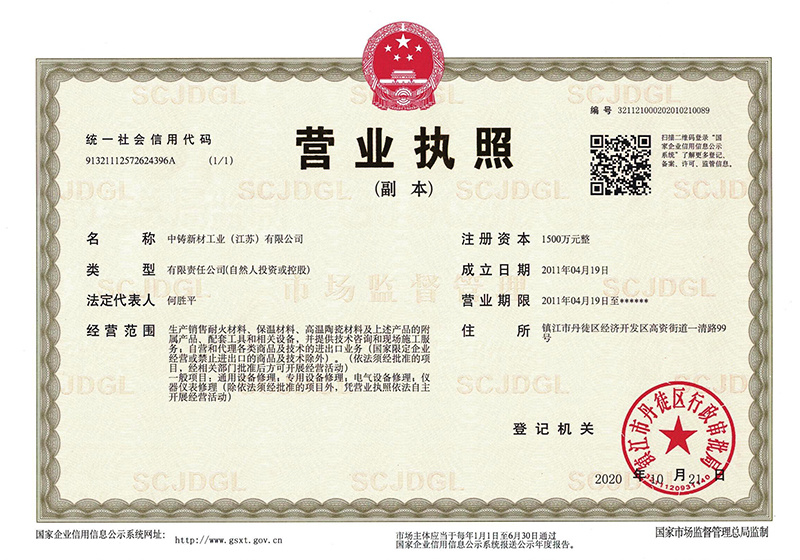News
SINO-FOUNDRY—professional refractory manufacturer
Unleashing the Potential of Castable Insulating Materials: A Comprehensive Guide
2024-12-28
Unleashing the Potential of Castable Insulating Materials Table of Contents 1. Introduction to Castable Insulating Materials 2. Understanding the Properties of Castable Insulating Materials 3. Types of Castable Insulating Materials 4. Applications of Castable Insulating Materials in Construction 5. Benefits of Using Castable Insulating Materials 6. Installation and Handlin
Unleashing the Potential of Castable Insulating Materials
Table of Contents
- 1. Introduction to Castable Insulating Materials
- 2. Understanding the Properties of Castable Insulating Materials
- 3. Types of Castable Insulating Materials
- 4. Applications of Castable Insulating Materials in Construction
- 5. Benefits of Using Castable Insulating Materials
- 6. Installation and Handling of Castable Insulating Materials
- 7. Fire Resistance and Safety Considerations
- 8. Future Trends in Castable Insulating Materials
- 9. Frequently Asked Questions (FAQs)
- 10. Conclusion
1. Introduction to Castable Insulating Materials
In the construction industry, **castable insulating materials** are gaining recognition for their exceptional properties and versatility. These materials are specially formulated to provide thermal insulation and fire resistance, making them ideal for a variety of applications. As energy efficiency becomes increasingly important, castable insulating materials offer a reliable solution for both new construction and renovation projects.
This article delves into the characteristics, types, applications, and benefits of these materials, ensuring a comprehensive understanding of how they can optimize performance in buildings.
2. Understanding the Properties of Castable Insulating Materials
Castable insulating materials are unique composites designed to provide high levels of thermal insulation while also being lightweight and easy to mold. Key properties include:
Thermal Performance
**Thermal conductivity** is a crucial factor in determining the effectiveness of insulating materials. Castable insulating materials typically exhibit low thermal conductivity, ensuring minimal heat transfer. This characteristic is vital for maintaining comfortable indoor temperatures and reducing energy costs.
Fire Resistance
Safety is paramount in construction, and castable insulating materials are engineered to withstand high temperatures. Their **fire-resistant properties** make them essential for applications in industrial and commercial settings.
Durability and Longevity
The longevity of insulating materials is crucial for minimizing maintenance costs. Castable insulating materials are designed to resist degradation over time, providing reliable performance even in harsh conditions.
Workability and Molding
One of the standout features of castable insulating materials is their ability to be molded into various shapes. This workability allows for creative design solutions and ensures a seamless fit in diverse applications.
3. Types of Castable Insulating Materials
Understanding the different types of castable insulating materials helps in selecting the right product for specific applications. The primary categories include:
Low-Density Castable Insulating Materials
These materials are lightweight and offer exceptional thermal insulation. They are typically used in areas where weight is a concern, such as in roofing systems.
High-Temperature Castable Insulating Materials
Designed to withstand extreme temperatures, high-temperature castable insulating materials are ideal for industrial applications, including furnaces and kilns.
Refractory Castable Insulating Materials
Refractory materials are specifically formulated to resist heat and thermal shock. They are commonly used in applications where exposure to high temperatures is a regular occurrence.
4. Applications of Castable Insulating Materials in Construction
Castable insulating materials are versatile and can be utilized in various construction projects. Common applications include:
Industrial Insulation
In industrial settings, castable insulating materials are essential for insulating boilers, pipes, and storage tanks. Their fire-resistant properties ensure safety while minimizing energy loss.
Residential Construction
Home builders increasingly use castable insulating materials in walls, attics, and foundations to enhance energy efficiency and thermal comfort.
Commercial Buildings
In commercial applications, castable insulating materials are used in HVAC systems and as part of fire protection systems, ensuring compliance with safety regulations.
Artistic and Decorative Uses
Beyond functional applications, these materials can also be used in decorative elements, allowing for creative architectural designs that emphasize aesthetics and performance.
5. Benefits of Using Castable Insulating Materials
The advantages of incorporating castable insulating materials into construction projects are numerous:
Energy Efficiency
By significantly reducing heat loss, castable insulating materials contribute to energy savings, leading to lower utility bills for building occupants.
Enhanced Safety
Their fire-resistant properties add an extra layer of safety, protecting properties and occupants from fire hazards.
Cost-Effectiveness
While the initial investment may be higher, the long-term savings on energy bills and reduced maintenance costs make castable insulating materials a cost-effective choice.
Design Flexibility
The ability to mold these materials into various shapes allows architects and designers greater freedom in their projects.
6. Installation and Handling of Castable Insulating Materials
Proper installation is critical for maximizing the benefits of castable insulating materials. Here are essential steps to consider:
Preparation of the Site
Before installation, ensure that the surface is clean and dry. Any contaminants can affect adhesion and overall performance.
Mixing and Pouring
Follow the manufacturer's instructions for mixing the materials. Pour the mixture into molds or onto surfaces, ensuring a uniform distribution.
Curing Process
Allow adequate time for curing according to product specifications. This process is crucial for achieving optimal strength and durability.
Quality Checks
Conduct thorough inspections after installation to ensure that the materials have been applied correctly and are performing as intended.
7. Fire Resistance and Safety Considerations
As fire safety regulations become stricter, the importance of fire-resistant materials cannot be overstated. Castable insulating materials excel in this area, offering:
Compliance with Safety Standards
Many castable insulating materials meet or exceed local and international safety codes, providing peace of mind for both builders and occupants.
Testing and Certification
It is essential to choose products that have undergone rigorous testing for fire resistance and durability. Look for certifications from recognized testing organizations.
Installation Practices
Employing best practices during installation further enhances the fire-resistant capabilities of these materials, ensuring they perform effectively in the event of a fire.
8. Future Trends in Castable Insulating Materials
As technology evolves, so does the field of insulating materials. Key trends to watch include:
Innovative Formulations
Research is underway to develop new formulations that improve thermal performance while reducing environmental impact.
Sustainability Practices
The construction industry is gradually moving towards sustainable practices. Expect to see more eco-friendly castable insulating materials that incorporate recycled content.
Smart Materials
The integration of smart technology into insulating materials is on the rise. Future products may feature sensors that monitor temperature and moisture, optimizing performance in real-time.
9. Frequently Asked Questions (FAQs)
What are castable insulating materials?
Castable insulating materials are specially designed composites that provide thermal insulation and fire resistance for various construction applications.
How do castable insulating materials differ from traditional insulation?
Unlike traditional insulation, castable materials can be molded into various shapes and offer superior fire resistance and durability.
Can castable insulating materials be used in residential construction?
Yes, they are increasingly popular in residential applications, providing energy efficiency and comfort.
What is the installation process for castable insulating materials?
The installation process involves site preparation, mixing, pouring, curing, and conducting quality checks to ensure effectiveness.
Are castable insulating materials environmentally friendly?
Many manufacturers are focusing on creating eco-friendly formulations, making these materials a sustainable choice for construction.
10. Conclusion
In summary, **castable insulating materials** represent a significant advancement in the construction and decorative materials industry. Their remarkable properties, including thermal performance, fire resistance, and durability, make them an essential choice for a wide range of applications. As we move towards a more energy-efficient and safety-conscious future, these materials will play an increasingly crucial role in building design and construction practices.
By understanding the different types, benefits, and installation processes of castable insulating materials, we can harness their full potential, enabling innovative designs that prioritize both functionality and aesthetics. Embracing these materials not only enhances building performance but also contributes to a safer and more sustainable built environment.
Related News
2024-11-05
Zhongzhu New Materials Industry sincerely invites you to participate in the 24th International Forum and Exhibition on Recycled Metals.

WeChat public account

View mobile website
Address : No. 99, Yiqing Road, Gaozi Street, EconomicDevelopment Zone, Dantu District, Zhenjiang City
Fax : +86-511-85683066
E-mail : sales@sfr168.com
Website : https://www.sfr168.com
Copyright©2023 Sino-Foundry Refractory(Jiangsu) Co.,Ltd. Powered by:www.300.cn
Copyright©2023 Sino-Foundry Refractory(Jiangsu) Co.,Ltd.
IPV6 | SEO | Cloud Information



